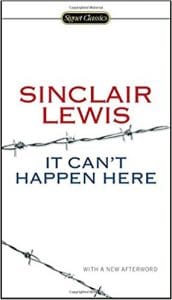[dropcap]O[/dropcap]ne year before MTV changed the landscape of music, the Buggles released “Video Killed the Radio Star.” This was nearly 20 years before the Presidents of the United States would cover the song, the video for which would become an MTV hit.
In 1949, George Orwell’s 1984 introduced the world to mass surveillance, telescreen communication, and newspeak concepts like “war is peace.” This was long before Nixon would declare the need to “win the peace” in Vietnam, before the advent of Skype and Facetime, and before Edward Snowden revealed just how far the gaze of the NSA actually sees.
In 1949, George Orwell’s 1984 introduced the world to mass surveillance, telescreen communication, and newspeak concepts like “war is peace.” This was long before Nixon would declare the need to “win the peace” in Vietnam…
In 2007 – one year before Obama was elected president and four years before he presided over the death of Osama Bin Laden – rapper The Game had his moment of prescience when he wrote the lyric, “I’m feeling like a black Democrat, Barack Obama, the only n*gga that can catch Osama.”
Sometimes the predictive power of art can be astounding in its specificity. Often such forecasts can be coincidental or negligible, or even humorous. But in other instances, when we ignore these prognostications – these warnings – we do so at our own peril.
The Cautionary Prophecy of Art
Let’s take a moment to look at another work of foresight – a little-known novel by Nobel laureate Sinclair Lewis called It Can’t Happen Here.
 Written in 1935, the book describes the rise of president Buzz Windrip, who is elected on a populist platform of nationalism, law and order, and an economic plan organized around corporatist principles. The foreigners, he declares, must be kept out. His enemy, the lying media, must be controlled or even suppressed. The management of the country placed into the hands of those with the most wealth. And in no time at all, American “greatness” would be restored.
Written in 1935, the book describes the rise of president Buzz Windrip, who is elected on a populist platform of nationalism, law and order, and an economic plan organized around corporatist principles. The foreigners, he declares, must be kept out. His enemy, the lying media, must be controlled or even suppressed. The management of the country placed into the hands of those with the most wealth. And in no time at all, American “greatness” would be restored.
Prior to launching his career in politics, this fictional president’s livelihood spanned everything from entertainment to snake oil salesman. He profited from a slew of scams to the detriment of his customers, and rose to prominence through time spent in the spotlight.
The foreigners, he declares, must be kept out. His enemy, the lying media, must be controlled or even suppressed. The management of the country placed into the hands of those with the most wealth.
Once he began campaigning for president, his opponents found that they “could not explain his power of bewitching large audiences.” How, they wondered, could his supporters not recognize that he was “vulgar, almost illiterate, a public liar easily detected”, that he had “ideas almost idiotic”, and an espoused religion that was “that of a traveling salesman”?

The Danger of Ignorance
In It Can’t Happen Here, Windrip’s election precipitates the rise of an authoritarian system under which the media outlets are censored or outright shut down, habeas corpus suspended, and minorities and opponents of the regime are sent to concentration camps. All of this is propped up by a militia group that answers directly to Windrip.
Keep in mind that this was written in 1935, years before Americans knew of Hitler’s totalitarianism, of the S.S., of Auschwitz.
Sinclair Lewis put all of this into his book, and suffice to say that the resemblance between prediction and reality is disquieting.
Today we have a president who has not only positioned the media as his enemy, but has advocated the elimination of outlets that have the gall to report his words and actions. His at-best disdainful views on the humanity and rights of women and various vulnerable minority groups are well documented. He thinks that armed militias comprised of literal Nazis have some “very fine people” – armed militias, incidentally, who view him as their commander, and who have declared that they will lend him violent support, if necessary. He pardoned a sheriff who created and oversaw a self-proclaimed concentration camp. And in the days leading up to the writing of this article, he has urged the circumvention of due process in our justice system.
Sinclair Lewis put all of this into his book, and suffice to say that the resemblance between prediction and reality is disquieting. It warrants our attention lest we allow the future to become a terrible homage to the worst of our past.
Heeding Art’s Warning
…art shows us where we’ve been, where we are, and where we might be headed.
I’m not saying that Windrip is Trump, or that concentration camps will be the result of his bluster. I am, however, pointing out that the parallels are there, and that some eight decades ago Lewis saw how an authoritarian-minded swindler like Trump (and not just like Trump – the mirror is blurred by few streaks) could rise to power.
This has been an exercise in the predictive power of art, a reminder that art shows us where we’ve been, where we are, and where we might be headed. Who among us – which of our contemporary artists – are offering forecasts to which we should take notice?
If we ignore the alarms sounded by art today, it may be to our detriment tomorrow.




